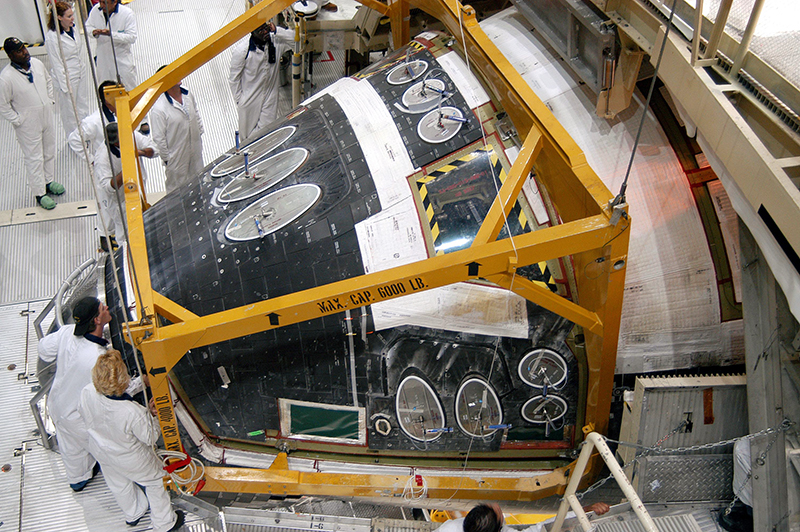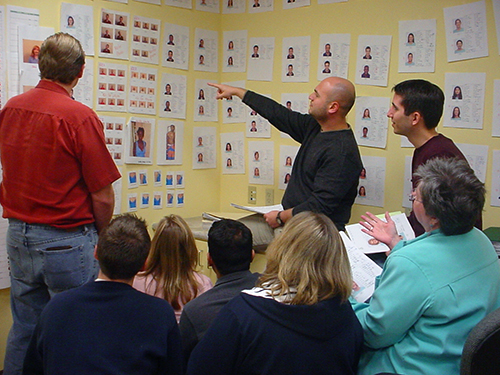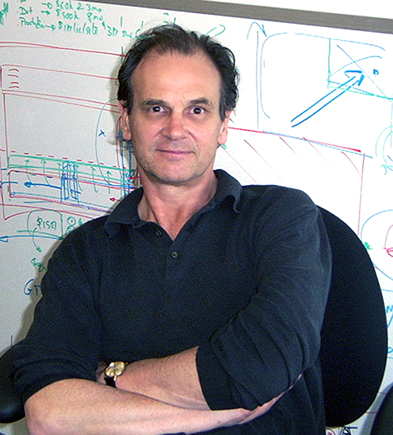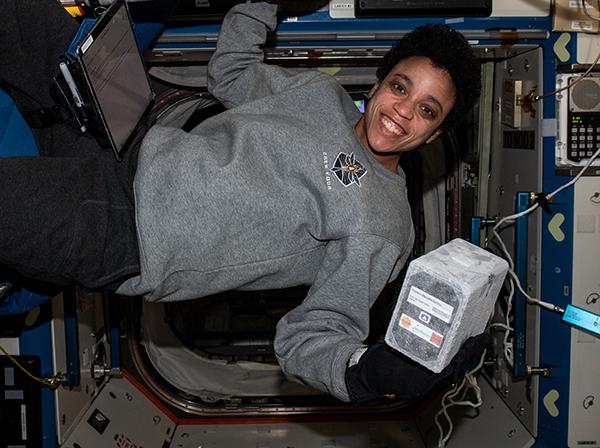
A Match Made in Space
Originating Technology/NASA Contribution
Just before the space shuttle reaches orbit, its three main engines shut down so that it can achieve separation from the massive external tank that provided the fuel required for liftoff and ascent. In jettisoning the external tank—which is completely devoid of fuel at this point in the flight—the space shuttle fires a series of thrusters, separate from its main engines, that gives the orbiter the maneuvering ability necessary to safely steer clear of the descending tank and maintain its intended flight path. These thrusters make up the space shuttle’s Reaction Control System.
While the space shuttle’s main engines only provide thrust in one direction (albeit a very powerful thrust), the Reaction Control System engines allow the vehicle to maneuver in any desired direction (via small amounts of thrust). The resulting rotational maneuvers are known as pitch, roll, and yaw, and are very important in ensuring that the shuttle docks properly when it arrives at the International Space Station and safely reenters the Earth’s atmosphere upon leaving.
To prevent the highly complex Reaction Control System from malfunctioning during space shuttle flights, and to provide a diagnosis if such a mishap were to occur, NASA turned to a method of artificial intelligence that truly defied the traditional laws of computer science.
Partnership
Dr. Michael Georgeff, the inventor of the radical methodology, is among the world’s leading experts in the research and application of artificial intelligence. He is a former director of both the Artificial Intelligence Center at Stanford Research Institute (SRI) International, Menlo Park, California, and the Australian Artificial Intelligence Institute Ltd., at the University of Melbourne.
It was during Georgeff’s tenure with SRI in the early 1990s when NASA tapped his expertise to improve upon the computers that monitor the shuttle fleet’s Reaction Control System engines. NASA desired advanced computer technology that could provide a variety of solutions for the many things that could potentially go wrong during a shuttle mission.
In response to NASA’s call for assistance, Georgeff and his SRI team developed the first “intelligent agent” software system to ever go into space. This system had its own goals and beliefs, and could pursue these goals and beliefs and then determine how it wanted to achieve them, in much the same way that humans do. Essentially, a computer equipped with this intelligent agent software could make decisions and deal with problems through a human-like power of reasoning. Should a first attempt at a solution fail, it takes into account alternative solutions, rather than it having to depend on a constrained, preprogrammed set of parameters that only leads to one attempted solution—as most conventional computers do. By furnishing a computer with a human-like power of reasoning, it ultimately assumes human-like logic and behavioral traits.
Georgeff playfully acknowledges that this intelligent agent is somewhat like a first version of HAL 9000—the neurotic supercomputer from the science fiction movie “2001, A Space Odyssey” that ends up endangering the space crew’s lives for the sake of the mission—only this time, he says, the true-to-life technology is fully under the control of NASA astronauts in space and Mission Control personnel on Earth.
Georgeff and NASA’s Johnson Space Center worked together to integrate the intelligent agent software system with the space shuttle computers. This real-time reasoning and control software was first used to monitor Discovery’s Reaction Control System in 1997.
Product Outcome
The intelligent agent software system utilized to monitor Discovery’s Reaction Control System engines has come down to Earth to improve the operation of a different kind of engine: an online matchmaking search engine.
Founded in 1998 and incorporated in 2000, weAttract.com, Inc., combines scientific and mathematical innovations to enhance human relationships. The concepts that Georgeff developed for NASA are at the core of the company’s computerized matchmaking technology.
“Although on the surface this was unlike anything I had been involved with before, the underlying issues were similar to ones I have faced on many commercial projects,” explains Georgeff, who currently resides as weAttract’s executive scientific advisor. “Even with something as complex as the space shuttle malfunction handling system I worked with at NASA, the underlying system involves helping create flexible avenues to meet goals. This was at the heart of what the weAttract technology aimed to do with relationships online.
“The work we are doing at weAttract has much in common with the approach we used at NASA,” he continues. “The key idea is to have some way of modeling human cognitive and emotional attitudes so that we can predict [human] behavior or determine how best [humans] can accomplish their desires. In the NASA project, we used a very simple model of these cognitive attitudes: the ‘desires’ of the system were limited to the goals of closing valves, testing fuel pressure, and so on. The system had no emotions.”
For weAttract, on the other hand, the company has developed “a very sophisticated model” of the cognitive and emotional attitudes underlying human behavior, based on a large number of psychological studies over many years. Its approach is to give the person it is seeking to assist (in this case, a person who has a desire to find an appropriate partner) a number of questions and tests. The company uses the output from these tests to logically and statistically deduce the most likely cognitive and emotional model for the person. Once it has this model, it can then determine the best way for that person to achieve his or her desires. In other words, by observing the person’s responses to the tests, weAttract is able to deduce a psychological model of that person, which—just like the system for the space shuttle—the company can then use to determine how best they can achieve their desires or goals. According to Georgeff, the methods weAtrract uses to do this are quite different from those used for the shuttle, but the underlying scientific approach is the same.
The company then goes one step further. By questioning the person on what type of partner they are seeking, weAttract can also build a psychological model of the preferred partner. This allows weAttract to find prospective partners that match not only on basic demographic and behavioral attitudes (e.g., non-smoking), but on a “rich model of their cognitive and emotional makeup.”
By having the psychological models of both the seeker and the potential partner, weAttract can then predict how these two models would interact and behave together. In this way, the company can identify potential strengths and weaknesses in the partnership, and suggest means for modifying behaviors to avoid problems and reducing the impact of any incompatibilities.
“This is an incredibly exciting project,” Georgeff proclaims. “I believe it is breaking new ground in understanding how we, as humans, interact with one another and how we can realize our personal and social potential.”
Match.com, the highly popular dating site with over 10 years of experience, began using weAttract’s software in 2003. The result was a sophisticated personality matching program that uses “smart” algorithms to customize a test for each user, so that each answer leads to a tailored follow-up question; no two tests are exactly alike.
“The Match.com Personality Test was a quantum leap beyond the pop-psych questionnaires you’ll find on other personals sites,” says Dr. Mark Thompson, the founder and chief executive officer of weAttract, as well as a Stanford University-trained clinical psychologist. “There were no pre-canned reports,” he adds. “In fact, there were over 100 million possible customized reports that went into great detail about the user’s strengths and quirks, and how to find someone who really ‘gets you’ on a deep level.”
In 2004, weAttract launched its second-generation product for Yahoo! Personals, which includes the Personality & Love Style Test and the Relationship Test. Based on weAttract’s mathematical and scientific prowess, these tests use interactive reenactments of real-life relationship scenarios, instead of static multiple-choice questions.
The Personality & Love Style Test, which takes approximately 10 minutes to complete, provides singles with a customized report of their personality type, love style, biggest challenges, and suggestions on which type of person would be a good fit for them. The Relationship Test, which takes roughly 30 minutes to complete, provides a personalized, in-depth report that measures compatibility with others, relationship skills, and much more.
Presently, the insights gained from weAttract’s matching endeavors have led it to form two new spinoff companies. The first, called SciencePlanet.com, aims to expand weAttract’s focus on educational tools and engines for the general public. The second, yet to be named, will work to apply the advances weAttract has made in facial recognition and personality profiling to areas of national security and defense.
Yahoo!® is a registered trademark of Yahoo! Inc.
Match.com© is a copyright of Match.com, LP.

Staff members of weAttract.com, Inc., conduct research on a series of individual profiles.

Dr. Michael Georgeff, the inventor of the real-time reasoning and control software that monitors the space shuttle Reaction Control System.

Workers in the Orbiter Processing Facility watch closely as Discovery’s Reaction Control System is lowered into position in the orbiter’s forward fuselage nose area. This system contains the engines that provide the thrust for rotational maneuvers and small velocity changes along the orbiter axis.













